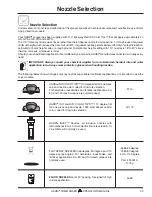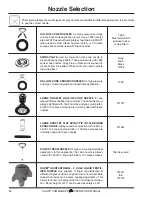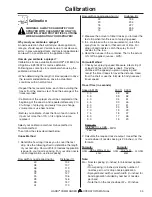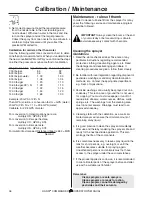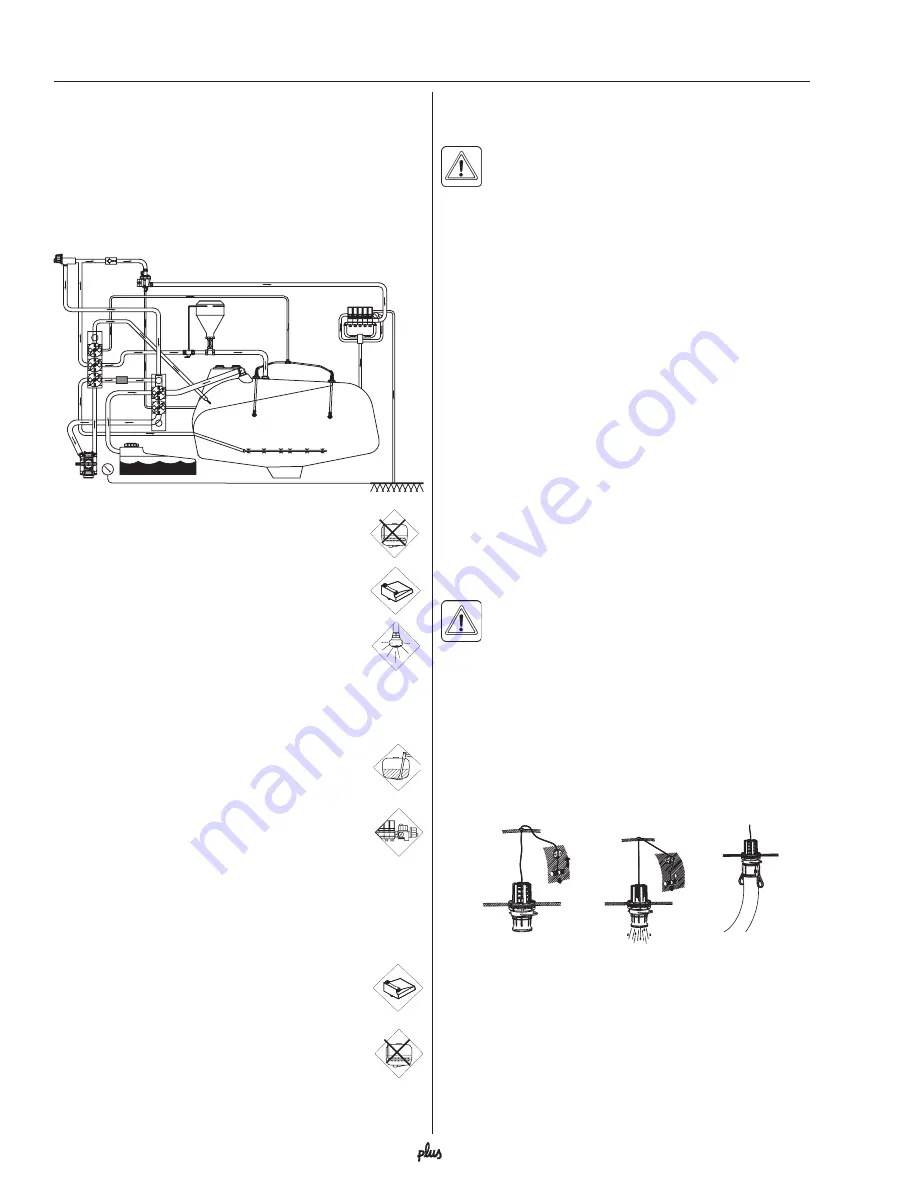
32
HARDI
®
COMMANDER OPERATOR’S MANUAL
Use of flush tank and rinse nozzles
(optional)
The incorporated flush tank can be used for two differ-
ent purposes.
A
. In-field diluting of remaining spray liquid residue in
the spraying circuit for spraying the liquid in the field,
before cleaning the sprayer.
1. Empty the sprayer as much as possible.
Turn the green pressure valve towards “No
Agitation” and spray until air comes out of
all nozzles.
2. Remove the tank filter basket.
3. Turn black suction valve towards “Flush
tank”.
4. Turn green pressure valves towards “Rins-
ing nozzle” (optional).
5. Engage and set the pump at approx. 300
r.p.m.
6. When rinsing water corresponding to approx. 10
times the spray liquid residue (see paragraph
“Technical Residue”) is used, turn black
suction valve towards “Suction from main
tank” and operate all valves, so all hoses
and components are rinsed.
7. Turn green pressure valve back to “Operat-
ing unit” and spray liquid in the field you
have just sprayed.
8. Repeat point 3-7 until the flush tank is empty.
B
. Rinsing the pump, operating unit, spray lines, etc. in
case of interruption in spraying before main tank is
empty (e.g. due to rain, etc.).
1. Close Self-cleaning filter (yellow valve).
2. Turn black suction valve towards “Flush
tank”.
3. Turn green pressure valve towards “No
Agitation”
4. Engage the pump and spray water from
rinsing tank in the field until all nozzle tubes/nozzles
are flushed with clean water.
Operation
5. Disengage pump again.
6. Open Self-cleaning filter again.
WARNING!
The rinsing nozzles cannot always
guarantee a 100% cleaning of the tank. Always
clean manually with a brush afterwards, espe-
cially if crops sensitive to the chemical just sprayed are
going to be sprayed afterwards!
Technical Residue
Inevitably a quantity of spray liquid will remain in the
system. It cannot be sprayed properly on the crop, as the
pump takes in air when the tank is about to be empty.
This Technical Residue is defined as the remaining
liquid qty. in the system as the first clear pressure drop
on the pressure gauge is read.
The dilutable residue must be diluted with 10 times the
amount of clean water and sprayed to the crop just
sprayed before cleaning the sprayer - See “Cleaning
the sprayer” (pp. 36-37).
Draining tanks
Operation of the main tank drain valve
WARNING!
Before using the top drain, verify that
disposal of waste is done according to chemical
label instructions and local regulations.
Pull the red handle at left hand side of the tank to open
the drain valve. The valve is spring loaded to close it,
but can be kept open by pulling the string out and
upwards in the V-shaped slot. To release and close the
drain valve again, pull the string downwards and the
valve will close automatically. If draining residues (e.g.
liquid fertilizer) into a reservoir, a snap-coupler with
hose can rapidly be connected to the drain valve and
the liquid safely drained.
Flush tank (optional)
To avoid algae developing in the flush tank, always
drain the flush tank when the sprayer is not in use for a
long period.
Foam marker tank (optional)
If the sprayer is to stand a few days, it is recommended
to drain and flush the foam marker tank to avoid mixed
foam from becoming inactive, as once mixed, foam
deteriorates rapidly.
















